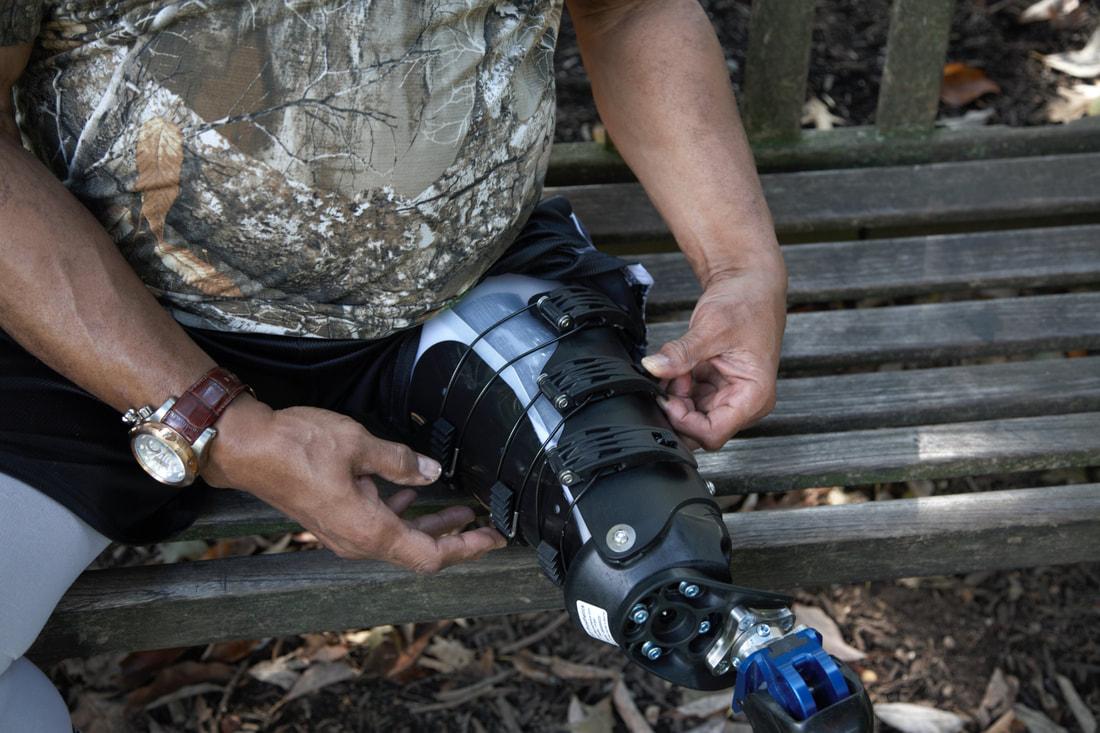IFIT Prosthetics: Achieving Optimal Fit and Comfort

Have you ever wondered how amputees regain their mobility and live fulfilling lives? Prosthetic limbs play a crucial role in restoring functionality and independence for individuals who have experienced limb loss. To ensure a successful transition, several key factors come into play, including residual limb shaping, prosthetic fit, and the use of adjustable prosthetic sockets. In this article, we will delve into these topics, highlighting their importance in the field of prosthetics and how they contribute to a better quality of life for amputees.
Understanding Residual Limb Shaping
Importance of Residual Limb Shaping
Residual limb shaping, also known as residual limb or stump management, refers to the process of preparing the remaining limb for the attachment of a prosthesis. This step is crucial for achieving a comfortable and secure fit between the residual limb and the prosthetic socket. The main goals of residual limb shaping include reducing swelling, molding the limb to the desired shape, and creating a stable foundation for the prosthetic device.
The Process of Residual Limb Shaping
The process of residual limb shaping typically begins soon after amputation surgery. Initially, the residual limb is swollen and sensitive, requiring careful attention and expert guidance. A skilled prosthetist works closely with the patient, employing various techniques to facilitate the shaping process. These techniques may involve compression bandaging, massage, and the use of temporary prosthetic devices. Over time, as the residual limb heals and matures, the shaping process continues, ultimately leading to a well-prepared limb ready for prosthetic fitting.
Professional Assistance for Residual Limb Shaping
While some individuals may attempt to shape their residual limb independently, seeking professional assistance is highly recommended. Prosthetists possess specialized knowledge and expertise in residual limb shaping, ensuring that the process is conducted safely and effectively. By working with a prosthetist, individuals can benefit from a personalized approach tailored to their unique needs, resulting in an optimal fit and increased comfort when wearing a prosthetic limb.
Prosthetic Fit: A Key Component
A proper prosthetic fit is crucial for achieving a successful outcome and enhancing the wearer's overall experience. An ill-fitting prosthesis can lead to discomfort, skin irritation, and limited functionality. Therefore, the process of fitting a prosthetic limb requires careful attention to detail and precision.
The Significance of a Proper Prosthetic Fit
A well-fitted prosthetic limb offers numerous benefits to the wearer. It allows for comfortable weight distribution, optimal control, and efficient energy transfer during movement. Moreover, a proper fit helps prevent skin breakdown and pressure sores, which can be detrimental to an individual's health and mobility.
Challenges Faced with Ill-Fitting Prosthetics
Wearing an ill-fitting prosthesis poses several challenges and limitations. It can cause discomfort, pain, and difficulty in performing daily activities. Improper alignment may lead to an uneven gait, potentially affecting the individual's balance and stability. Moreover, an ill-fitting prosthetic limb may result in decreased confidence and hinder participation in social and recreational activities.
Adjustable Prosthetic Socket: Enhancing Comfort and Functionality
Introduction to Adjustable Prosthetic Sockets
An adjustable prosthetic socket is an innovative solution designed to address the challenges of traditional, static sockets. Unlike conventional sockets that remain fixed in shape, adjustable sockets allow for modifications to accommodate changes in the residual limb size and shape over time. This adaptability enhances both comfort and functionality for the prosthesis wearer.
Benefits of Adjustable Prosthetic Sockets
The versatility of adjustable prosthetic sockets offers several advantages. Firstly, it provides the ability to adjust the socket's fit as the residual limb undergoes changes, such as volume fluctuations due to swelling or muscle atrophy. This adjustability ensures a secure fit throughout the various stages of the residual limb's healing process.
Secondly, adjustable sockets allow for efficient weight distribution and load management. They enable prosthetists to fine-tune the socket's alignment, ensuring optimal biomechanics and reducing the risk of joint pain or discomfort. This feature is particularly beneficial for amputees who engage in physically demanding activities or sports.
Customization and Adaptability
Adjustable prosthetic sockets can be customized to suit the unique needs and preferences of the individual wearer. Prosthetists can make adjustments in real-time, ensuring a personalized fit that promotes comfort, stability, and improved mobility. This level of customization allows amputees to participate actively in the fitting process, providing valuable feedback and enhancing their overall satisfaction with the prosthetic limb.
Fitting Prosthetics: Achieving Optimal Performance
Factors to Consider for Fitting Prosthetics
Fitting a prosthetic limb requires considering various factors to ensure optimal performance. These factors include the residual limb's shape, volume, skin condition, and the individual's specific functional requirements. Additionally, the prosthetist takes into account the wearer's lifestyle, goals, and activities to tailor the fitting process accordingly.
Importance of Precision and Alignment
Achieving precise alignment is paramount in prosthetic fitting. Proper alignment ensures that the forces exerted on the residual limb and the prosthesis are distributed evenly, minimizing discomfort and maximizing efficiency. A well-aligned prosthetic limb allows for a more natural gait pattern, promoting balance and reducing the risk of long-term joint complications.
Optimal Fitting Through Collaboration
The fitting procedure involves both the amputee and the prosthetist working together. To achieve an ideal fit, open communication, feedback, and active engagement from the wearer are required. The prosthetist and amputee can fine-tune the prosthetic limb by working together.
- Art
- Causes
- Crafts
- Dance
- Drinks
- Film
- Fitness
- Food
- Games
- Gardening
- Health
- Home
- Literature
- Music
- Networking
- Other
- Party
- Religion
- Shopping
- Sports
- Theater
- Wellness
- IT, Cloud, Software and Technology


